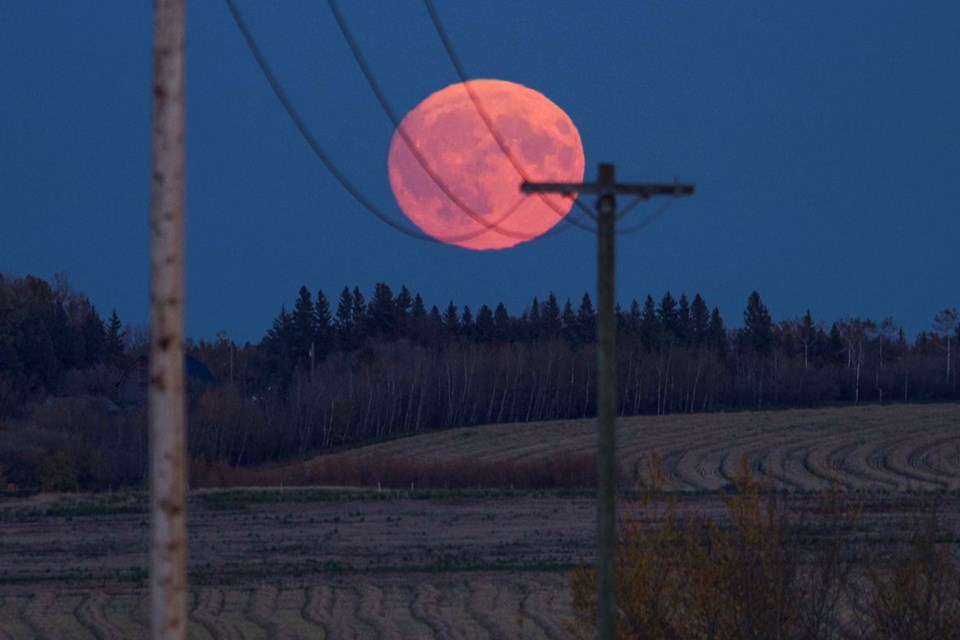Full-moon fans have an extra reason for taking in their favourite orb on Tuesday night: a partial lunar eclipse.
Starting around 10:12 p.m. ET, observers across Canada will see one edge of the full moon dip into Earth’s shadow for about an hour, with the effect reaching its maximum at about 10:44 p.m. ET.
The eclipse will be visible wherever weather allows. In the eastern part of the country, the moon will be high above the horizon in the late evening by the time it begins to darken, about 10:12 p.m. ET. Adjusting for time zones, observers further west will experience the eclipse earlier in the evening. On the Pacific coast, it will already be in progress as the moon is rising.
TUESDAY NIGHT’S PARTIAL LUNAR ECLIPSE: WHAT TO LOOK FOR
Watch for a darkening along the northern edge of the full moon as it skims the umbra (the dark, inner portion of Earth's shadow). The partial eclipse lasts just over one hour.
Partial eclipse begins:
10:12 p.m. ET / 7:12 p.m. PT
Mid-eclipse:
10:44 p.m. ET / 7:44 p.m. PT
Partial eclipse ends:
11:17 p.m. ET / 8:17 p.m. PT
Watch for a darkening along the northern edge of the full moon as it skims the umbra (the dark, inner portion of Earth's shadow). The partial eclipse lasts just over one hour.
Because the eclipse is only partial, most of the moon’s disk will remain near its normal level of brightness throughout event. Try watching with binoculars to get a better sense of the contrast between the eclipsed and uneclipsed sides of the lunar disk.
On average, lunar eclipses occur about twice per year but are not always visible in any given place. Canada is especially well placed for the next total lunar eclipse, during which the full moon will be plunged into darkness on the night of March 13, 2025.
Tuesday’s event also coincides with the annual Harvest Moon. Traditionally, this is the full moon that is closest to the fall equinox, which this year occurs on Sept. 22. During an equinox, day and night are about equal in length around the world.
For those with an unobstructed view, the Harvest moon rising in east as the sun is sinking into the west makes for a dramatic sight, enhanced by a well known optical illusion that makes the moon seem larger near the horizon.




